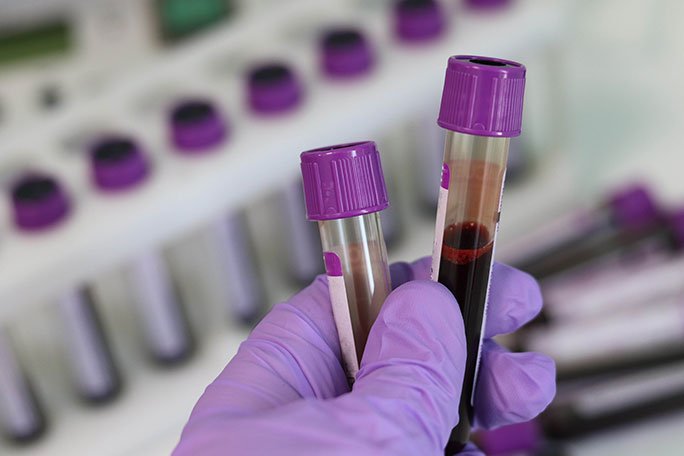Effective Inventory Management Strategies for Medical Devices in Chronic Pain Management
Summary
- Implementing an efficient inventory management system is essential for healthcare facilities to track and update their inventory of medical devices for chronic pain management.
- Utilizing barcode technology can help streamline inventory tracking processes and improve accuracy in managing medical devices.
- Regular audits, staff training, and collaboration with vendors are crucial for ensuring that healthcare facilities maintain an up-to-date inventory of medical devices for chronic pain management.
Introduction
As healthcare facilities in the United States continue to provide treatment and care for patients suffering from chronic pain, the need for effective inventory management of medical devices has become increasingly important. With the variety of medical devices available for chronic pain management, healthcare facilities must have a system in place to track, update, and maintain their inventory to ensure quality patient care.
The Importance of Inventory Management for Medical Devices
Inventory management plays a crucial role in the operations of healthcare facilities, especially when it comes to medical devices used for chronic pain management. Effective inventory management can help facilities:
- Ensure that the necessary medical devices are always available for patient care.
- Prevent waste and minimize excess inventory, ultimately saving costs.
- Comply with regulatory requirements for tracking and maintaining medical devices.
Challenges in Tracking and Updating Inventory for Chronic Pain Management
Healthcare facilities face several challenges when it comes to tracking and updating their inventory of medical devices for chronic pain management. Some of the common challenges include:
- Manual tracking processes that are prone to errors and inefficiencies.
- Lack of proper training for staff members in managing inventory effectively.
- Difficulty in coordinating with vendors for timely updates and replacement of medical devices.
Strategies for Effective Inventory Management
Implementing a Barcode System
Utilizing barcode technology can significantly improve the efficiency and accuracy of inventory tracking for medical devices used in chronic pain management. By implementing a barcode system, healthcare facilities can:
- Quickly scan and update inventory records in real-time.
- Track the usage and expiration dates of medical devices more effectively.
- Reduce manual errors and streamline inventory management processes.
Conducting Regular Audits
Regular audits of inventory for medical devices are essential for healthcare facilities to identify any Discrepancies, potential shortages, or expired products. By conducting regular audits, facilities can:
- Ensure that the inventory is accurate and up-to-date.
- Identify any issues or trends that may indicate the need for adjusting inventory levels.
- Comply with regulatory requirements for maintaining accurate inventory records.
- Understand the importance of accurate inventory management for patient care.
- Utilize barcode technology and other tools effectively for tracking inventory.
- Follow protocols for updating and maintaining inventory records.
- Receive timely updates on product availability and any changes in inventory.
- Coordinate replacements for expired or defective medical devices.
- Negotiate pricing and delivery terms to optimize inventory management processes.
Staff Training and Education
Proper training and education for staff members involved in managing inventory are critical for the success of an inventory management system. Staff members should be trained to:
Collaborating with Vendors
Establishing a collaborative relationship with vendors of medical devices can also help healthcare facilities in tracking and updating their inventory effectively. By working closely with vendors, facilities can:
Conclusion
Ensuring an efficient inventory management system for medical devices used in chronic pain management is vital for healthcare facilities in the United States. By implementing strategies such as utilizing barcode technology, conducting regular audits, providing staff training, and collaborating with vendors, facilities can track and update their inventory effectively. Ultimately, effective inventory management contributes to improved patient care, cost savings, and regulatory compliance in healthcare facilities.

Disclaimer: The content provided on this blog is for informational purposes only, reflecting the personal opinions and insights of the author(s) on the topics. The information provided should not be used for diagnosing or treating a health problem or disease, and those seeking personal medical advice should consult with a licensed physician. Always seek the advice of your doctor or other qualified health provider regarding a medical condition. Never disregard professional medical advice or delay in seeking it because of something you have read on this website. If you think you may have a medical emergency, call 911 or go to the nearest emergency room immediately. No physician-patient relationship is created by this web site or its use. No contributors to this web site make any representations, express or implied, with respect to the information provided herein or to its use. While we strive to share accurate and up-to-date information, we cannot guarantee the completeness, reliability, or accuracy of the content. The blog may also include links to external websites and resources for the convenience of our readers. Please note that linking to other sites does not imply endorsement of their content, practices, or services by us. Readers should use their discretion and judgment while exploring any external links and resources mentioned on this blog.

